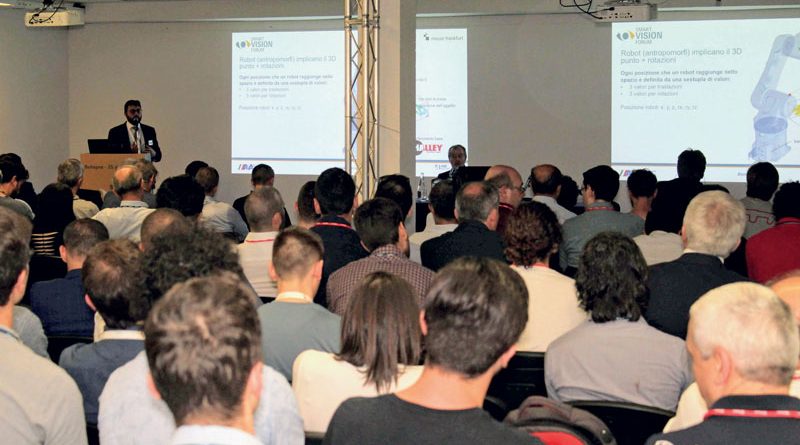Smart Vision Forum: It’s Been (Finally) Time to Talk About Vision
More than 450 people attended, last June in Bologna, the first edition of the Smart Vision Forum, an event strongly wanted by AIdAM and ANIE Automazione to spread the culture of machine vision and gather together manufacturers, distributors and integrators. Machine vision systems, in fact, make it possible to detect, in an increasingly precise
and rapid way, complex information from the field and transmit it to the processing systems. Here is what we have seen in Bologna.
by Fabrizio Dalle Nogare
We ask the readers of our magazine not to be surprised by the title we have chosen. In fact, Assemblaggio has been dealing with machine vision since the very beginning. However, there is little doubt that the world of machine vision has been rather closed up to now: as a proof of all this, companies working in this sector have more than once reported the need to spread the so-called “culture of vision” so that the full benefits of these technologies available to machines, plants and automation systems manufacturers might come up. Moreover, machine vision is one of the enabling technologies par excellence talking about digital or smart factories: the artificial eyes, in fact, make it possible to detect (and transmit) information and data that otherwise would not be possible to get. The idea, therefore, of organizing an event dedicated specifically to machine vision was obviously well received by Italian companies and professionals, who responded en masse to the appeal launched by AIdAM and ANIE Automazione, two different associations that decided to actively collaborate by involving Messe Frankfurt Italia in the organization of the event. The first edition of the Smart Vision Forum, held on June 25th at the Sala Maggiore of Bologna Congressi, is expected not to be the last one.
A Guide to machine vision systems
Michele Viscardi, president of AIdAM, spoke about what we have defined as the culture of vision, saying once again that vision systems have “an absolutely key role in the transition to the smart factory, as they are essential for improving the quality of products, processes and certainly benefit people. Hence the collaboration with ANIE Automazione and the idea of the Smart Vision Forum”.
“It’s not easy for two different associations to start collaborating and working together”, replied Marco Vecchio, Director of ANIE Automazione, who also insisted on the need to find continuity with policies to support digitization. “These are fundamental for the growth of the sector – he said – and aim to create a driving force to make the issue of training more and more central”. It is no coincidence, as announced by Director Vecchio at the Smart Vision Forum, that a Guide to machine vision systems is now available on the website of ANIE Automazione. The Guide was written in collaboration with AIdAM and is free to download, also rich in practical case stories.
The plenary session was also attended by the Council Member for Productive Activities of the Municipality of Bologna, Marco Lombardo, who spoke about the important investments that the city of Bologna is making to reaffirm its role as a “visionary town, not afraid of the future, without neglecting the risks faced by workers, especially the least qualified ones, within the industry of the future”.
Luca Rossi, Director of Confindustria Emilia Romagna, said that the institution for which he works “has been adopting for some years a modular approach with the aim to allow companies to identify their point of attack in terms of digitization. A project of this kind has so far given very important results and involved more than 4,000 stakeholders”.
A look at the market and data
Anne Wendel, Director of VDMA Automation, the reference institution for automation in Germany, provided some interesting data on machine vision, highlighting a significant slowdown in the German market, which grew slightly (+4%) in 2018, compared to 8% growth in Italy, and expected to fall slightly in 2019. This decline was essentially caused by the abrupt slowdown of companies operating in the automotive (-8%) and electronics (-7.3%) industries, i.e. the main sectors in which machine vision systems are employed.
Germany and Italy still share quite a significant trade exchange, while among the new trends the overwhelming growth of the Chinese market (+21.6% in 2018) has to be mentioned and is supposed to raise the competition between Asia and Europe. In addition, many important German companies are facing, or will soon face, a phase of generational change that will bring changes in the whole industrial scenario. “New languages, the spread of increasingly shared standards and the adoption of new business models are all trends that already characterize machine vision”, said Anne Wendel. “Despite the slowdown shown by the data, both for Italy and Germany, this technology will be increasingly relevant in the near future”.

